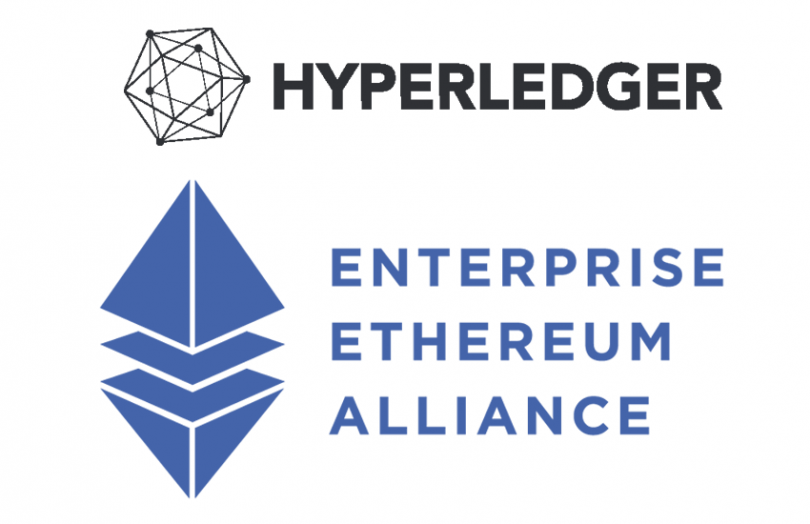Hypleredger the cross-industry blockchain alliance and the Enterprise Ethereum Alliance(EEA) announced they plan to collaborate to further business adoption of blockchain technologies. Each will be an associate member of the other organization. Both are open-source and standards-based.
Hyperledger has more than 270 members and the EEA has in excess of 500 members.
“Great open standards depend upon great open source code, so this is a natural alliance for both organizations,” said Behlendorf. “Standards, specifications and certification all help enterprise blockchain customers commit to implementations with confidence since they have better assurances of interoperability as well as multiple vendors of choice.”
“For anyone who ever put a ‘vs.’ between Ethereum and Hyperledger, this collaboration shows it’s now ‘Ethereum AND Hyperledger,'” said Behlendorf. He’s previously commented that the two are complimentary.
EEA standards
Standards are crucial, and the EEA has put significant effort into their development. Earlier this year it released the specification for a standard Enterprise version of Ethereum.
“This is a time of great opportunity,” said Resnick. “Collaborating through mutual associate membership provides more opportunities for both organizations to work more closely together. In addition, Hyperledger developers who join the EEA can participate in EEA Certification to ensure solution compliance for projects related to the Enterprise Ethereum Client Specification.”
Existing overlap
As an example of existing cross pollination, Hyperledger Burrow developed by Monax, implements the Ethereum Virtual Machine (EVM). This is actively being used in Hyperledger Sawtooth, and it’s also possible to use it with Hyperledger Fabric.
Monax itself is building the Agreements Network (AN). They’re bridging the two with Hyperledger Burrow talking to public Ethereum via the Cosmos network. That way they can run a permissioned blockchain with a public Ethereum ERC20 token.
What about R3?
Currently, the other major enterprise blockchain player is R3. The company is a member of Hyperledger, but its Corda code is not.
Although the Corda code is open source, the company provides a licensed Enterprise product to manage the network. The licence for the base Corda code is more permissive than Ethereum’s. That means in the future there are likely to be competitors for the Enterprise version.
When Ledger Insights spoke to Behlendorf a couple of months ago, he was very diplomatic about R3’s approach. He acknowledged that it was a different approach to Hyperledger’s but said that outside of the blockchain arena, others had adopted a similar tactic.
“There have been successful examples, like MongoDB, of a company that you know is very tightly associated with the underlying platform and did reap both VC investment and revenue from doing that,” said Behlendorf. “And so I don’t begrudge them that decision. I don’t know if it leads to a more vibrant developer community. But if they can hire all the smart people in the world, then it doesn’t matter.”







